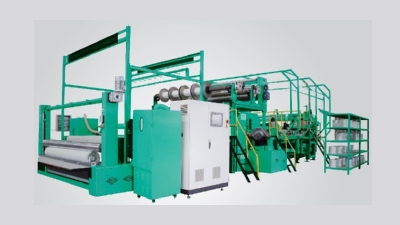Understanding Biaxial Cloth: An Insight into Its Types and Applications
Table of Contents
- Types of Biaxial Cloth: A Detailed Overview
- The Unique Advantages of Biaxial Cloth Over Other Fabrics
- Applications of Biaxial Cloth in Various Industries
- How Biaxial Cloth Enhances Composite Material Performance
- Cost-Effectiveness and Sustainability of Biaxial Cloth Solutions
- Future Trends in Biaxial Cloth Development and Use
- Maximizing Efficiency and Quality: Exploring the YRS3-M-F-II Chopped Biaxial Warp Knitting Machine
- FAQS
- Conclusion
- Related Posts
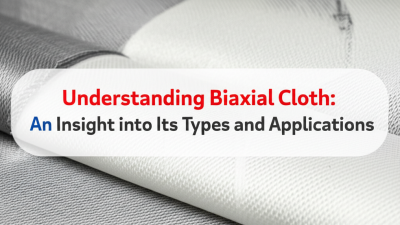 Lately, Biaxial Cloth has really been making waves across different industries, and honestly, it’s easy to see why. People keep talking about its unique properties and how versatile it is. According to industry reports, the global market for advanced composite materials is expected to hit around $32 billion by 2026, and Biaxial Cloth is expected to play a pretty big role—especially in fields like aerospace, automotive, and marine engineering. Companies like DANYANG YIXUN MACHINERY CO., LTD are actually leading the charge here. They’re known for their top-notch multiaxial and biaxial warp knitting machines, which help produce high-quality glass fiber reinforcements. The cool thing about Biaxial Cloth is how adaptable it is, especially with all the new manufacturing tech coming out. It really helps boost performance in lightweight structures and even supports sustainability efforts in the industry.
In this post, I’ll talk about the different types and uses of Biaxial Cloth, and show you why it’s such a game-changer in modern manufacturing.
Lately, Biaxial Cloth has really been making waves across different industries, and honestly, it’s easy to see why. People keep talking about its unique properties and how versatile it is. According to industry reports, the global market for advanced composite materials is expected to hit around $32 billion by 2026, and Biaxial Cloth is expected to play a pretty big role—especially in fields like aerospace, automotive, and marine engineering. Companies like DANYANG YIXUN MACHINERY CO., LTD are actually leading the charge here. They’re known for their top-notch multiaxial and biaxial warp knitting machines, which help produce high-quality glass fiber reinforcements. The cool thing about Biaxial Cloth is how adaptable it is, especially with all the new manufacturing tech coming out. It really helps boost performance in lightweight structures and even supports sustainability efforts in the industry.
In this post, I’ll talk about the different types and uses of Biaxial Cloth, and show you why it’s such a game-changer in modern manufacturing.
Types of Biaxial Cloth: A Detailed Overview
Biaxial cloth is a pretty versatile material that gets used across all sorts of industries. There are a few different types, each suited for particular uses. The two main kinds you’ll hear about are woven and non-woven biaxial fabrics. Woven biaxial fabrics are made by intertwining yarns in two directions, which gives them awesome strength and rigidity. That makes them perfect for tough jobs like aerospace and automotive stuff, where you want something lightweight but really durable. On the flip side, non-woven biaxial fabrics are often made through processes like needle punching or thermal bonding. They tend to be more flexible and conform easily, making them super useful in construction and healthcare applications.
Looking at the bigger picture, the global demand for biaxial cloth is expected to hit new highs pretty soon. Thanks to advances in composite materials and the push for lighter, more efficient solutions, the market's growth is looking pretty strong. Some recent industry reports suggest that the market for composite materials could hit around USD 45 billion by 2028, growing over 10% annually. This uptrend is largely driven by expanding uses in wind energy and automotive industries—basically, where the need for high-performance, energy-efficient materials is more important than ever. As technology keeps evolving, understanding the different types of biaxial cloth will be key for industries wanting to stay ahead and boost sustainability. It’s an exciting time for sure!"
Understanding Biaxial Cloth: An Insight into Its Types and Applications
This bar chart illustrates the different types of biaxial cloth and their respective applications in various industries.
The Unique Advantages of Biaxial Cloth Over Other Fabrics
Biaxial cloth is pretty fascinating—that's the fabric woven in two directions, giving it a pretty unique edge over traditional textiles. And get this: according to a report from MarketsandMarkets, the demand for advanced composite materials like biaxial fabrics is expected to hit around $27.36 billion by 2026. That really shows how its importance is growing across industries like construction, aerospace, and automotive. What makes it so popular? Well, it’s lightweight but still super strong, making it perfect for structural reinforcements and parts that need to be durable without adding unnecessary weight.
One of the coolest perks of biaxial fabric is its flexibility. It handles easily during manufacturing and assembly, which is a big deal. A study from the Journal of Composite Materials even suggests that biaxial fabrics can deliver a strength-to-weight ratio that's up to 30% better than traditional unidirectional fabrics. That’s a huge plus, not just for maintaining structural integrity but also for saving energy during use—definitely in line with that push towards sustainability we hear about these days. As more companies are looking for eco-friendly options, biaxial cloth’s versatility and high performance really make it a material to watch in the future of advanced manufacturing.
Understanding Biaxial Cloth: An Insight into Its Types and Applications
| Type of Biaxial Cloth | Material Composition | Key Applications | Advantages |
|---|---|---|---|
| Glass Fiber Biaxial Cloth | E-glass or S-glass | Aerospace, Automotive, Marine | High strength-to-weight ratio, Corrosion resistance |
| Carbon Fiber Biaxial Cloth | Carbon fibers and resin | Sports equipment, Wind energy, Automotive | Exceptional stiffness, Lightweight, High tensile strength |
| Aramid Biaxial Cloth | Twaron or Kevlar | Ballistic protective gear, Aerospace | Impact and abrasion resistance, Lightweight |
| Polyester Biaxial Cloth | Polyester fibers | General manufacturing, Automotive | Cost-effective, Good chemical resistance |
Applications of Biaxial Cloth in Various Industries
Biaxial cloth, with its pretty unique weaving pattern, is used in a bunch of industries because of how strong and flexible it is. You know, like in cars — it’s really becoming popular for making lightweight parts. Its knack for handling a lot of stress without adding much weight helps boost fuel economy and makes vehicles perform better overall. Plus, it’s pretty easy to mold into complicated shapes, which is super handy for things like body panels or reinforcements inside the car.
When it comes to planes, biaxial cloth is a big deal too. It’s known for giving you excellent strength without the extra bulk and standing up to tough conditions. That’s why you see it used in building aircraft parts—durability is key. And it’s catching on in wind energy as well; these fabrics are used to make turbine blades, making them tougher and last longer. As industries keep innovating and trying to be more eco-friendly, it’s clear that biaxial cloth is a versatile material that plays a major role in high-performance solutions.
How Biaxial Cloth Enhances Composite Material Performance
You know, biaxial cloth is really shaking up the whole composite materials scene. Its secret? It’s woven with fibers running in two directions, which helps distribute stress more evenly—and that means stronger parts without adding a bunch of extra weight. I read a report from the American Composites Manufacturers Association (ACMA) that said composites reinforced with biaxial cloth can be up to 30% stronger in tensile strength compared to the traditional unidirectional fabrics. That's pretty impressive and makes it perfect for high-performance stuff in cars, planes, and boats.
By incorporating biaxial cloth into your designs, you also get better durability and less risk of delamination, which is a big deal for engineers. The higher fiber content and the inherent qualities of this fabric let manufacturers create lighter, yet tougher components—answering the call for high-performance materials these days. Plus, the fact that biaxial cloth can be easily integrated into different manufacturing processes really opens the door for some innovative structural designs.
A few tips if you’re thinking of using biaxial cloth in your projects:
- Try to align the fiber orientation with the main stress directions—this helps get the most out of its performance.
- Pick a resin system that plays nicely with the biaxial cloth’s mechanical properties. It makes a difference in adhesion and can keep your composite lighter.
- Keep an eye on quality—regular inspections of your layers and curing process will make sure you end up with a consistent, top-notch final product.
Cost-Effectiveness and Sustainability of Biaxial Cloth Solutions
Biaxial cloth has really become a popular pick across a bunch of different industries, mainly because it's cost-effective and eco-friendly. Basically, by weaving fibers in two directions, this fabric gets way stronger and more durable — making it perfect for things like construction, cars, and even aerospace stuff. Plus, the way it's made tends to be pretty efficient, which not only helps cut down on production costs but also reduces waste, so it's a bit better for the planet too.
With newer materials and tech coming into play, biaxial cloth can really help businesses save money in the long run — both upfront and over time. As more companies are jumping on the sustainability bandwagon, demand for green materials has gone up big time. Luckily, biaxial cloth hits that mark since it uses recyclable and biodegradable fibers, which means less environmental impact. And since it's lightweight, it also helps save energy during transportation and usage. All in all, it’s a smart choice for companies that want good performance but also care about being eco-conscious.
Future Trends in Biaxial Cloth Development and Use
You know, the development of biaxial fabric is really heading in some exciting directions that could shake up a bunch of industries. As material science keeps pushing forward, we’re seeing this fabric get better and better — it’s lighter, tougher, and way more flexible. These improvements are especially super relevant in fields like aerospace, automotive, and construction, where everyone’s always on the hunt for materials that are both strong and lightweight. Plus, manufacturers are getting creative by adding smart tech into these fabrics, so they can monitor themselves in real-time or even fix themselves if something goes wrong.
On top of all that, sustainability is becoming a big deal in the world of biaxial cloth. Companies are now trying to use recycled fibers and bio-based resins to make these fabrics more eco-friendly. It’s kinda cool because not only does it help the planet, but it also appeals to consumers who are extra conscious about their choices. As these trends keep evolving, the possibilities for biaxial cloth are growing like crazy — opening doors for new, innovative solutions that balance high performance with environmental responsibility. It’s an exciting time to see where this technology is headed!
Maximizing Efficiency and Quality: Exploring the YRS3-M-F-II Chopped Biaxial Warp Knitting Machine
The YRS3-M-F-II Chopped Biaxial Warp Knitting Machine stands out as a revolutionary tool designed for maximizing efficiency and quality in the production of full width weft insertion chopped mats and composite fabrics. Tailored for industries requiring precision and durability, this machine integrates advanced technology to enhance manufacturing processes. Its flexibility in handling various fabric widths—ranging from 103", 108", to 130"—coupled with different gauge options (E6, E7, E14) ensures that manufacturers can easily adapt to specific project requirements without compromising on quality.
With an impressive operational speed of 50-1000 r/min, the YRS3-M-F-II caters to both rapid production needs and detailed craftsmanship. This adaptability is crucial for businesses looking to optimize their throughput while maintaining high standards of fabric integrity. Furthermore, the machine's general assembly drawing provides a comprehensive overview of its components, facilitating straightforward maintenance and operation. By streamlining production with this advanced warp knitting machine, manufacturers can significantly reduce lead times and improve overall fabric quality, positioning themselves competitively in the market.
FAQS
: Biaxial cloth is a fabric woven with fibers in two directions, offering advantages such as a high strength-to-weight ratio, enhanced flexibility, and superior durability, making it ideal for applications in construction, aerospace, and automotive industries.
Biaxial cloth provides up to 30% better tensile strength and is lighter than traditional unidirectional fabrics. This leads to enhanced structural integrity and energy efficiency, aligning with sustainability trends in manufacturing.
Biaxial cloth is extensively used in the automotive industry for lightweight components, in aerospace for aircraft construction, and in wind energy for wind turbine blades, among other applications.
Biaxial cloth's excellent strength-to-weight ratio and its resistance to extreme conditions make it ideal for aircraft components, where durability and performance are critical.
Yes, its lightweight nature helps significantly improve fuel efficiency and overall vehicle performance, allowing for easier molding into complex shapes for structural reinforcements and body panels.
Biaxial cloth enhances composite materials by distributing stress evenly, resulting in increased strength, improved durability, and resistance to delamination, while allowing for lightweight designs that meet high-performance demands.
It is important to align the fiber orientation with primary stress loads, select an appropriate resin system for better adhesion, and implement rigorous quality control measures during the composite manufacturing process.
The demand for advanced composite materials, including biaxial fabrics, is projected to reach $27.36 billion by 2026, indicating their growing significance in various industries.
Biaxial cloth's adaptability and superior performance characteristics help manufacturers meet the rising demand for eco-friendly materials, making it a critical component in sustainable advanced manufacturing.
Conclusion
Biaxial cloth is becoming more and more popular these days, mainly because of its unique properties and how versatile it is across different industries. Honestly, it’s pretty fascinating stuff! In this blog, I’ll walk you through the various types of biaxial fabric and point out why it has some clear advantages over traditional textiles—think stronger, more durable, and just better overall. When you use biaxial cloth in composite materials, it really boosts their performance, making them perfect for sectors like aerospace, automotive, and even construction projects.
What’s more, biaxial fabrics are not only cost-effective but also more sustainable. This makes them a smart choice for manufacturers who wanna cut down on environmental impact without sacrificing quality. And as demand continues to grow, the future looks pretty promising, especially with new manufacturing techniques and innovative uses on the horizon. DANYANG YIXUN MACHINERY CO., LTD is really leading the charge here—they’re experts when it comes to machinery that produces biaxial warp knitting fabrics, helping push this important material forward in the textile and composites spaces.
Related Posts
-
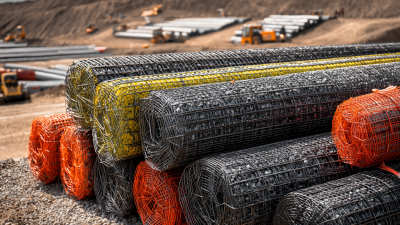
The Ultimate Guide to Understanding Geogrid Material for Construction Success
-
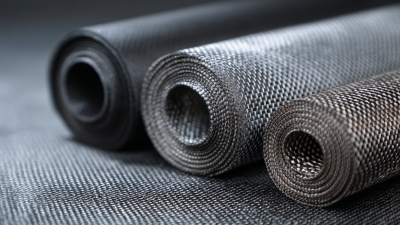
A Comprehensive Guide to Choosing the Right Multiaxial Fabric Cloth for Your Project
-
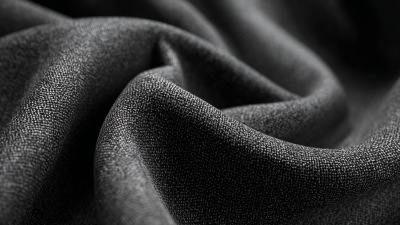
7 Essential Tips for Choosing the Right Industrial Fabric for Your Projects
-
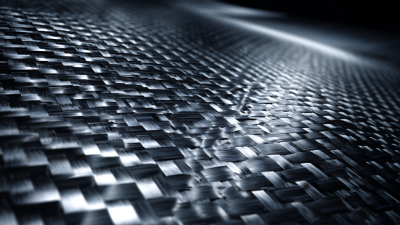
Innovative Applications of Multi-Axial Carbon Fiber in Aerospace and Automotive Industries
-
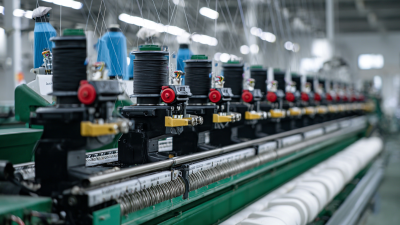
Unlocking Efficiency: Essential Strategies for Sourcing Spare Parts for Warp Knitting Machines


